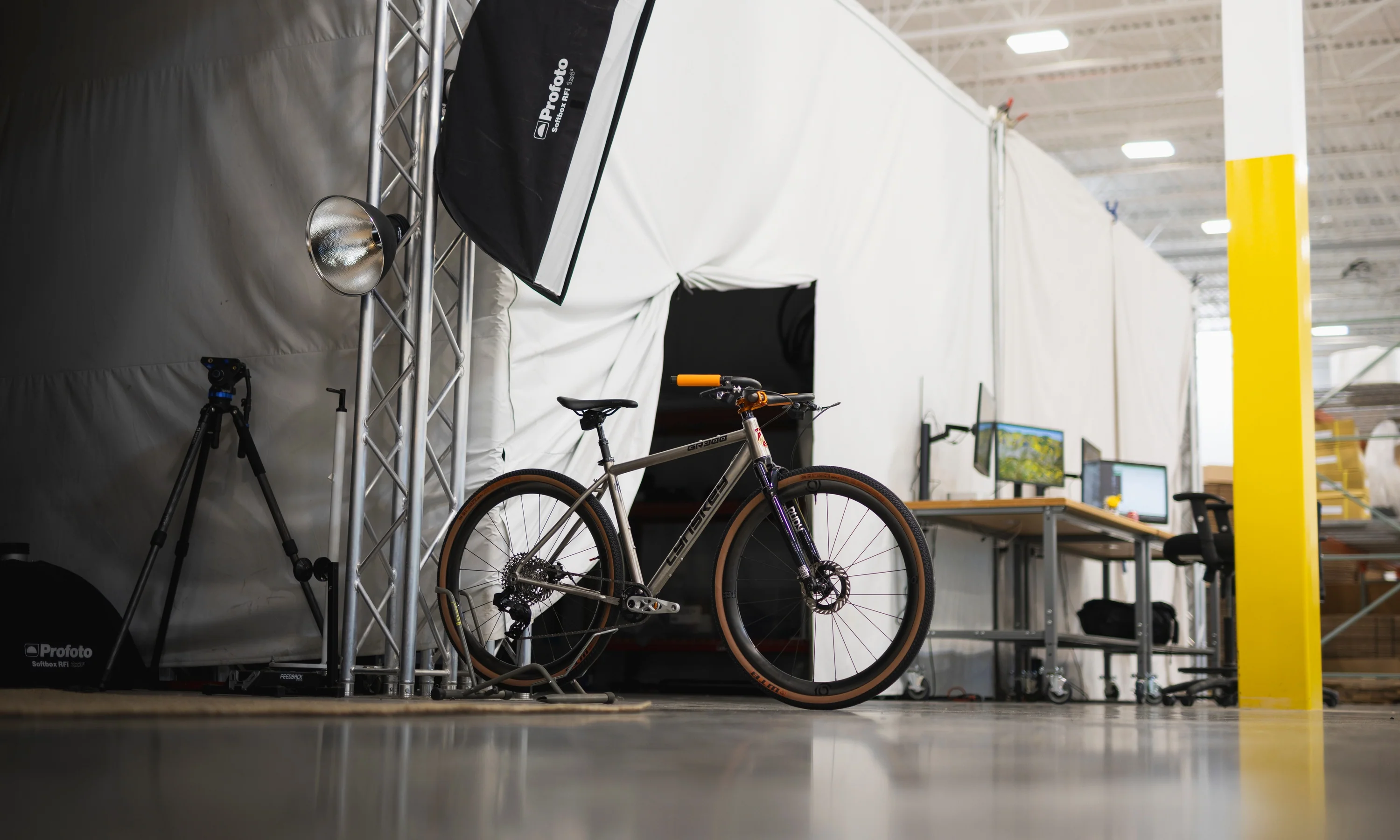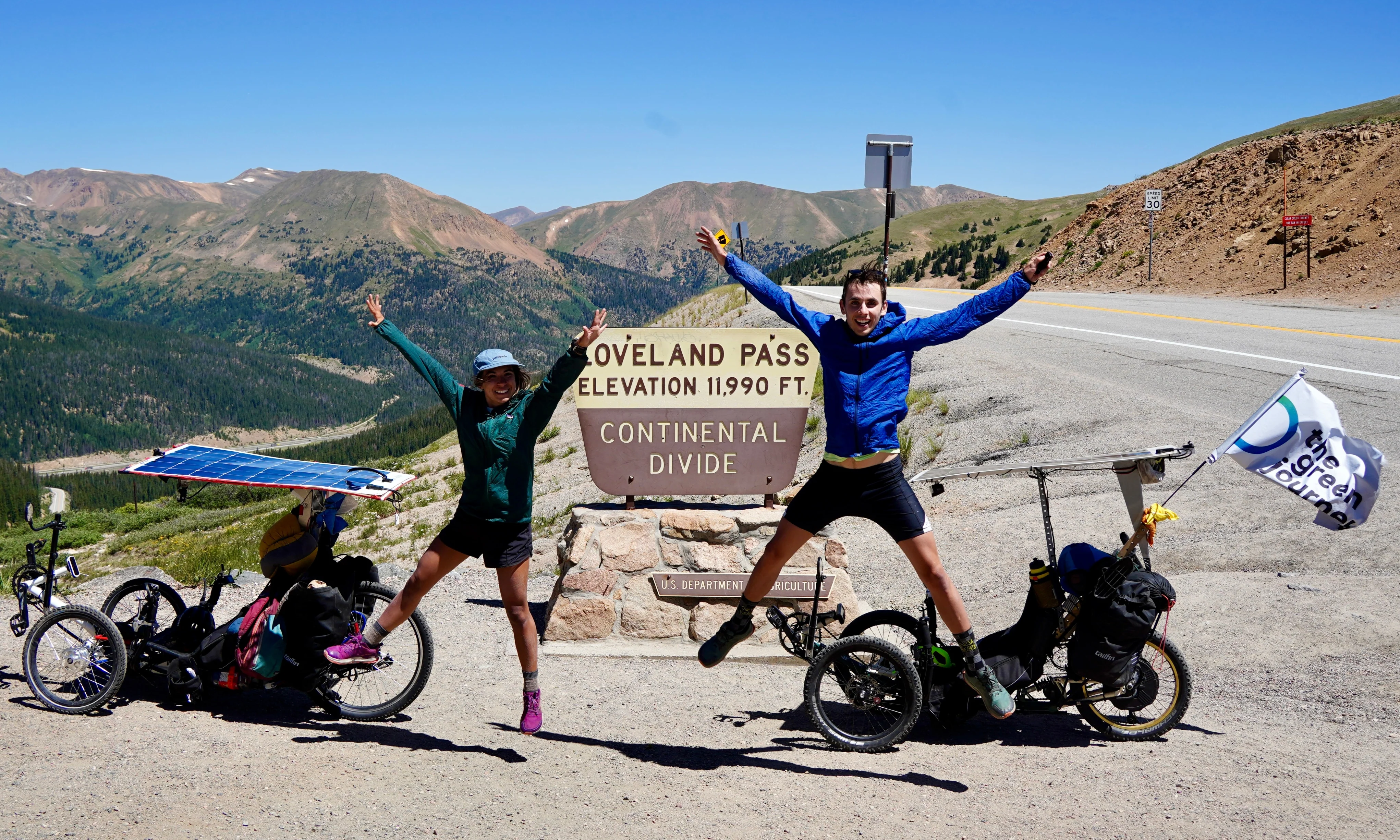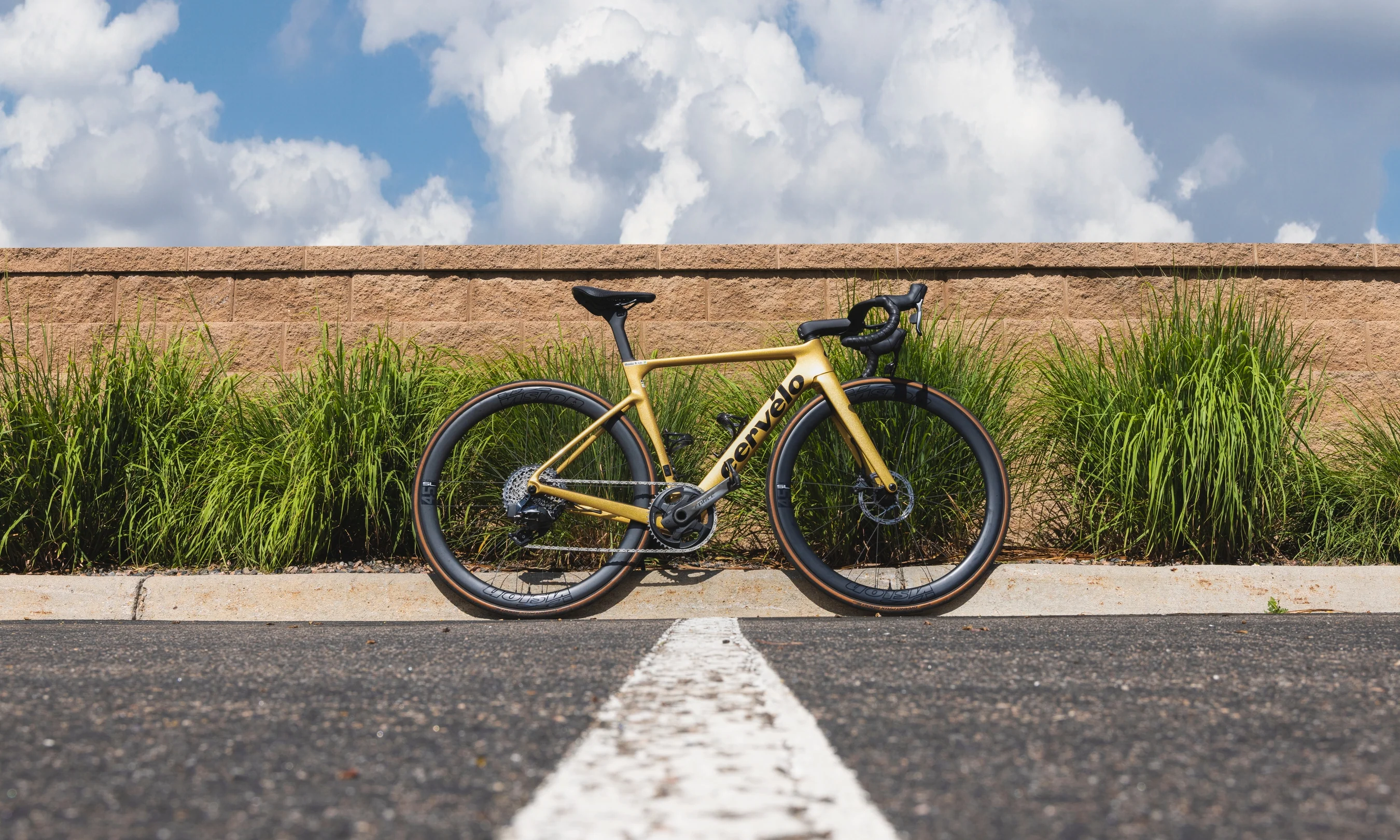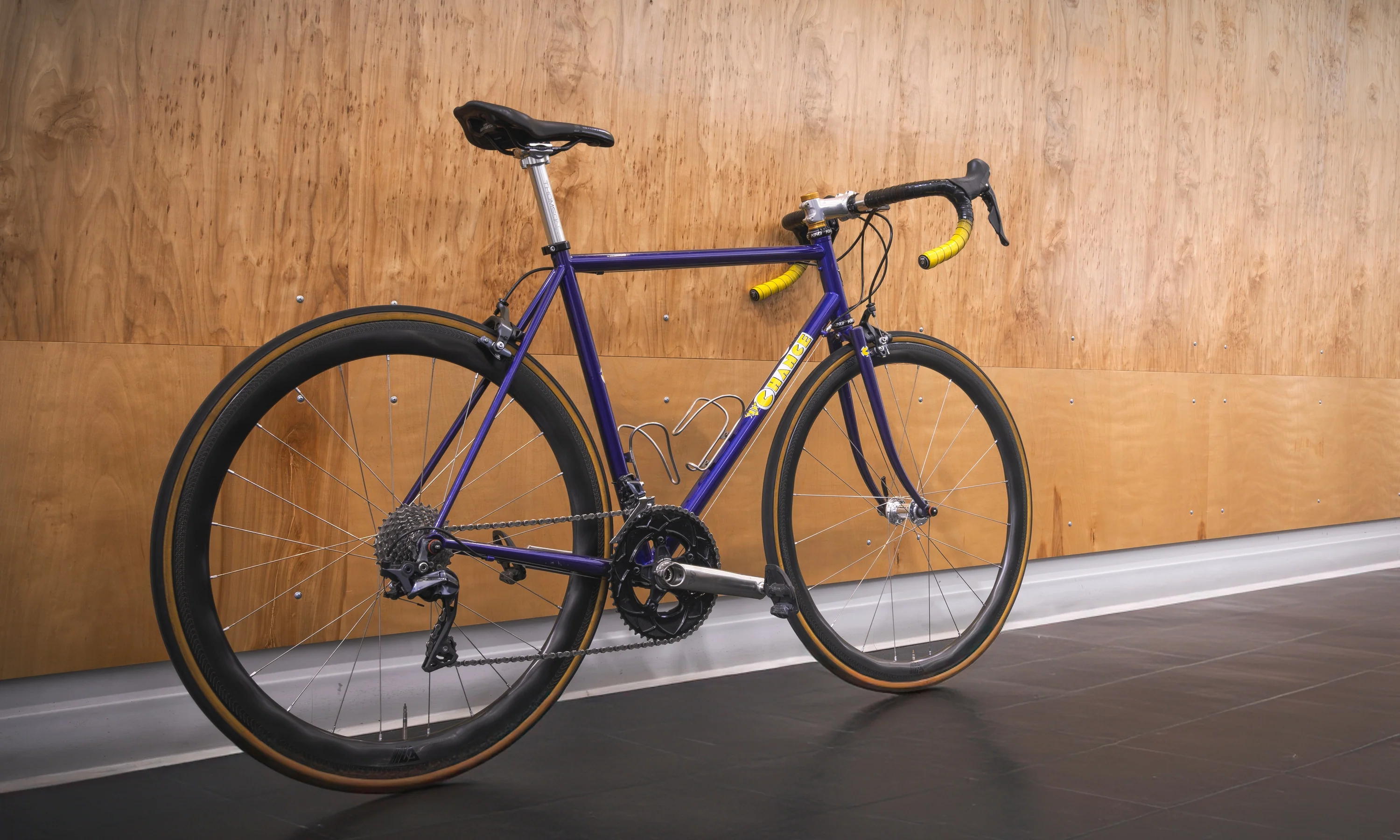Ed Note: This post was originally written for and published on Pinkbike in 2016.
In the early '90s, Yeti was a bike company that had a bit of an outlaw image. Its founder, John Parker, said, "We were kind of the subversives of the time. We were the ones demanding change, doing different things.” It’s an image that fit perfectly with one of Yeti’s brightest young stars: Missy “The Missile” Giove.
Giove was a woman known for her personality and style as much as she was for her riding. Her wild hair, wild attitude, eccentric quirks, and undeniable speed earned her a following devoted and fanatical enough to match her bike’s. Ths Yeti ARC ASLT was her weapon of choice for the 1993 Downhill World Cup season where she piloted it to 3rd overall and 3rd at the World Championships in Metabief, France.
Rising from the Dead (or Basement)

After the 1993 World Championships, this Yeti was stripped down to the frame and given by Missy to a restaurant — Stonehouse Subs in Durango, CO — to be hung on the wall as a piece of memorabilia. It was then lost from the public eye after the restaurant closed down. Fortunately, Durango collector and Yeti guru Mike Wilk rescued the frame from the former owner's basement and, over the course of 10 months, restored it to its former glory.
Wilk studied old footage and magazine spreads and scoured every available source for the rare parts necessary to get each detail correct or as close to original as possible. He claims it’s probably 98% true to what Missy rode in 1993. An impressive rebirth and, like a ship of Theseus, it’s hard to distinguish it from its original form without a keen and scrutinizing eye. Wilk even went so far as to acquire a new upper rear triangle in yellow to replace the turquoise one (which didn’t come until '94) that was on the frame when he bought it, likely installed as a repair. Other than this, Wilk left all the original chips and dents that Missy lovingly crashed into the frame.
Missy Giove's 1993 Build

In line with John Parker’s change-driven Yeti philosophy, Yeti was one of the early adopters of suspension on mountain bikes. Up front is a custom Manitou 2 fork with some hybrid Manitou 3 and RockShox Judy internals. The left leg has a RockShox Judy spring, and the right has a stack of Manitou 3 elastomers, modified to make the suspension feel more active.
On the rear, the ARC had a low single pivot design, primitive by today’s standards, but state of the art at the time. Impressively, the custom Risse shock built for the ARC was still holding air twenty years later. It did turn out to be near impossible to add air, but Risse Racing in Oregon provided rebuild parts to restore the shock to full working condition.
The shock is attached to the frame with custom welded plates that had two mounts, allowing the bike’s geometry and travel to be slightly altered depending on if the shock was mounted in the higher or lower position. It’s a design ahead of its time and now featured in some form on many modern bikes. With the current set up, the ARC only has about an inch of travel on the rear, “maybe one and a half on a good day,” Wilk says.

Top riders like Missy got the Shimano XTR drivetrain, which had only just been introduced in 1992 as Shimano’s race-oriented groupset. The only exceptions are Grip Shifters instead of XTR thumb shifters, and the blue anodized Grafton cranks which matched the blue anodization accenting the rest of the bike. A holdover from the '80s, anodization was still hot as mountain biking entered the '90s. The Grafton brakes, Ringle hubs and components, and oversized (1 ¼”) Chris King headset are all blindingly blue.
The triple chainrings up front gave Missy enough gears to race the bike both uphill and downhill, which she would. She would raise the seatpost and race XC the same weekend she was racing downhill. Missy was known to always run the anodized Ringle bottle cage, even racing downhill and dual slalom, just because it was convenient to leave it on for training and XC rides.

The Grafton Speed controller brakes worked but, like most brakes in the early days of mountain biking, they were easily overwhelmed by the rigors of downhill racing. To combat this, the ARC had a machined brace added to the stays above the cantilever posts and an ultra-rare anodized DKG brake booster to add stiffness. There’s still some significant flex, but these additions help minimize it as much as is possible with the technology of the time.
For its cockpit, the ARC has Answer Hyperlite handlebars, which help augment the Manitou fork’s meager 2 inches of suspension travel with some extra compliance. The Onza bar ends were a sponsor item that Missy actually despised. If she got the chance she’d remove them once she was out of the pits to race without them. The stem is a “Team Cut” Answer ATAC. Yeti craftsman, Frank “The Welder” Wadelton milled material from the top and face of the stem more aggressively than consumer versions to save a little more weight.
The Yeti rolls on a Mavic front rim and Specialized BXL21 rear laced to anodized Ringle Super Bubba and Super Eight hubs. The reason for the mismatched rims is because the Yeti team didn’t have a rim sponsor. Their riders went through so many they’d run whatever they could pull out from one of their mechanic’s stockpile of rims. Wilk noted some consistency in photos of Missy running the BXL21 on the rear, so found one in pristine condition for this build, which wasn’t easy. The rims are capped off with some similarly rare IRC Yeti FRO (For Racing Only) tires.
It's Rideable!

We reunited Missy with her bike at Sea Otter in 2016!
Unlike some mountain bikes of a similar vintage and value, Mike Wilk built the bike to actually be ridden, taking it out to shred some of the best trails in the country in Durango, Colorado.
Of course, it isn’t comparable modern bikes with modern technology. The Risse shock is likely the plushest and highest quality of any vintage shock, but the rear end sways and flexes wildly, and pedals poorly compared to modern rear ends. Wilk claims the Manitou fork to be the best example he’s ridden but is still surprised that people didn’t die riding them in downhill races. It makes Missy’s speed on the Yeti all the more impressive.
TPC was hoping Missy would be able to add some more chips and dents to the frame, riding it on the downhill racecourse at the 2016 Sea Otter Classic. Unfortunately, she injured her knee over the course of the weekend before she had her chance.
























